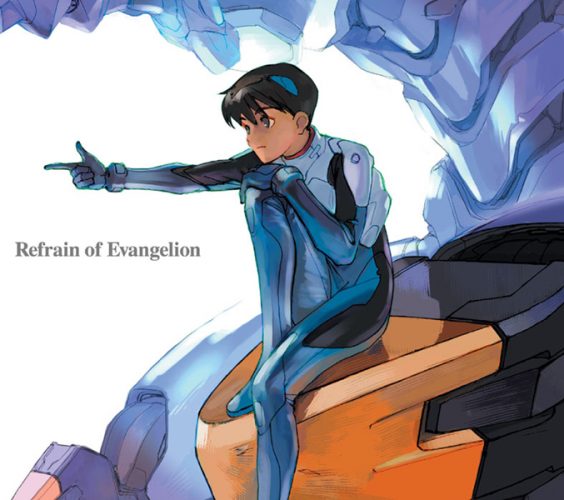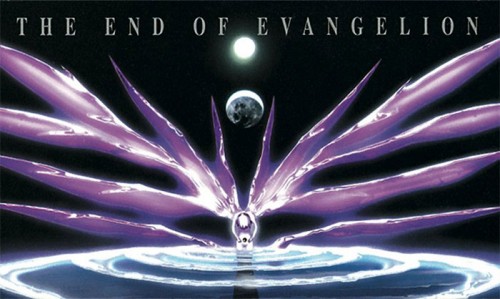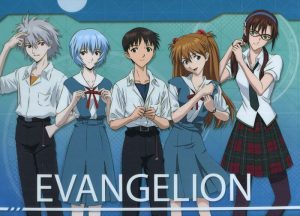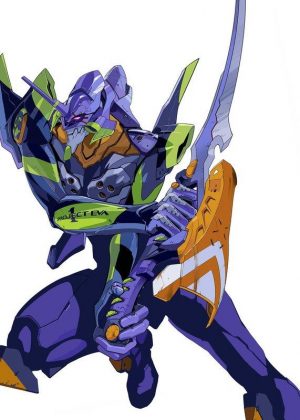
Neon Genesis Evangelion is one of the most popular and influential anime of all time, and for good reason. Its striking animation and storyline that deconstructed traditional shounen anime tropes made it the breakout hit for Hideaki Anno and his studio, Gainax. But, thanks to its famously troubled production and strange directorial decisions, the anime splits off into two separate endings and a number of spinoffs.
So what’s the best way to navigate this media maze to get the optimum viewing experience? What’s necessary to watch and what’s safe to skip? Join us today as we guide you through our recommended watch order for Neon Genesis Evangelion.
Neon Genesis Evangelion Episodes 1–24
The best place to start is, predictably enough, with the original 1995 TV anime. We recommend A.D. Vision’s Platinum Edition DVD set, since that includes the director’s cut versions of episodes 21 – 24 (which add a few more scenes that tie into The End of Evangelion). Both the Japanese and English dubs are solid, although the English version does have a touch of that charmingly amateurish voice acting you tend to get with ‘90s anime dubs.
The original series takes place in post-apocalyptic Japan and tells the story of Shinji Ikari, an introverted kid who is suddenly plucked from his quiet life and forced to pilot a giant mecha to fight monsters called Angels that are attacking Earth. We urge you not to worry too much about understanding what exactly the Angels are or what Gendo’s master plan is or any of the other esoteric worldbuilding the series throws at you.
At its core, Neon Genesis Evangelion is a character drama. It’s about how stress, abuse, and mental illness can shape someone’s entire outlook on life, and it explores what happens when people with radically different outlooks clash with one another. It all culminates in episode 24 with Kaworu’s short but impactful relationship with Shinji, and from there we move on to the more fleshed out and interesting of the story’s two endings: The End of Evangelion.
Neon Genesis Evangelion: The End of Evangelion
In 1997, Gainax released the bombastic conclusion to its most popular series with The End of Evangelion. There was a short recap movie released a few months earlier called Death & Rebirth, but it’s not worth watching unless you need a refresher on the series. The End of Evangelion is closer in concept to Anno’s original plan for episodes 25 and 26 of the anime before production issues and censorship got in the way, so it’s generally considered the canon ending for the story.
Picking up where episode 24 left off, The End of Evangelion follows each of our main characters as they struggle with the world slowly collapsing around them. The Third Impact sequences are notoriously artsy and incomprehensible, but again, we believe that it’s best not to get too caught up in the weeds here. Enjoy the gorgeously deranged animation and think about how these sequences represent the emotions Shinji and his friends are feeling at the end of the world. But if you’re interested in breaking them down further, there are countless articles and videos online that put forth theories as to what each individual moment means. Either way, this movie is a depressing but suitably climactic ending to such a unique anime.
Neon Genesis Evangelion episodes 25–26
Now that you’ve experienced the ending Anno intended, it’s time to go back to the original series. By this point in the anime’s production, the animation team was flying by the seat of its pants and had no time or resources to craft a proper conclusion. So they decided to ditch the established plot and spend two episodes on a psychological analysis of Shinji’s mind instead.
We still think these episodes are essential viewing since they spell out and resolve some of Shinji’s emotional issues. Plus, the high school dream sequence and the crazy “Congratulations!” closer are so iconic to this franchise’s identity that it would be criminal not to watch them. After you’re done, check out Shinji’s Rant on YouTube—it’s an in-character tirade from Shinji’s English voice actor that perfectly expresses the frustration fans felt at this out-of-left-field ending.
Final Thoughts

Neon Genesis Evangelion’s story is complicated, but luckily, the watch order is relatively straightforward. Be sure to come back for part 2, which will focus on the anime’s production history, Anno’s influences from Christian mythology and Freudian psychology, and optional spinoffs like the Rebuild movies, a manga adaptation, and a bizarre high school romance visual novel. We hope to see you then!
What did you think of our watch order breakdown? What’s your preferred way to watch Neon Genesis Evangelion? Let us know in the comments, and thanks so much for reading!
Recommended Post




